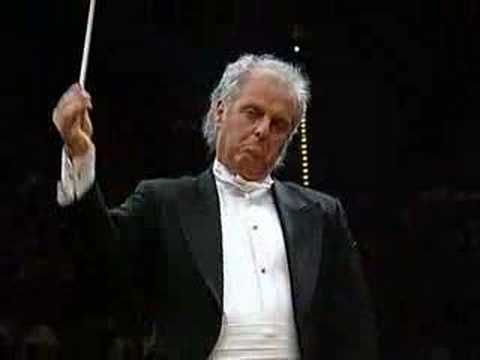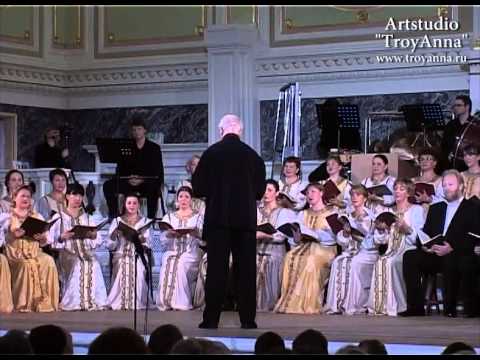Folk genres in classical music
For professional composers, folk music has always been a source of creative inspiration. Folk genres are abundantly cited in academic music of all times and peoples; stylization of folk songs, tunes, and dances is a favorite artistic technique of classical composers.
A diamond cut into a diamond
Folk genres in the music of Russian classical composers are perceived as a natural and integral part of it, as its heritage. Russian composers cut the diamond of folk genres into a diamond, carefully touching the music of different peoples, hearing the richness of its intonations and rhythms and embodying its living appearance in their works.
It is difficult to name a Russian opera or symphonic work where Russian folk melodies are not heard. ON THE. Rimsky-Korsakov created a heartfelt lyrical song in folk style for the opera “The Tsar’s Bride”, in which the grief of a girl married to an unloved man is poured out. Lyubasha’s song contains the characteristic features of Russian lyrical folklore: it sounds without instrumental accompaniment, that is, a capella (a rare example in opera), the wide, drawn-out melody of the song is diatonic, equipped with the richest chants.
Lyubasha’s song from the opera “The Tsar’s Bride”
With the light hand of M.I. Glinka, many Russian composers became interested in oriental (eastern) folklore: A.P. Borodin and M.A. Balakirev, N.A. Rimsky-Korsakov and S.V. Rachmaninov. In Rachmaninov’s romance “Don’t sing, the beauty is with me,” the vocal melody and accompaniment demonstrate masterly chromatic intonations characteristic of the music of the East.
Romance “Don’t sing, beauty, in front of me”


Watch this video on YouTube
Balakirev’s famous fantasy for piano “Islamey” is based on the Kabardian folk dance of the same name. The violent rhythm of frantic male dance is combined in this work with a melodious, languid theme – it is of Tatar origin.
Oriental fantasy for piano “Islamey”


Watch this video on YouTube
Genre kaleidoscope
Folk genres in the music of Western European composers are a very common artistic phenomenon. Ancient dances – rigaudon, gavotte, sarabande, chaconne, bourre, galliard and other folk songs – from lullabies to drinking songs, are frequent guests on the pages of musical works of outstanding composers. The graceful French dance minuet, which emerged from the folk environment, became one of the favorites of the European nobility, and, after some time, it was included by professional composers as one of the parts of the instrumental suite (XVII century). Among the Viennese classics, this dance took pride of place as the third part of the sonata-symphonic cycle (18th century).
The round dance folk dance farandola originated in the south of France. Holding hands and moving in a chain, farandola performers form various figures to the accompaniment of a cheerful tambourine and a gentle flute. A fiery farandole sounds in J. Bizet’s symphonic suite “Arlesienne” immediately after the marching introduction, which is also based on a genuine ancient tune – the Christmas song “March of the Three Kings”.
Farandole from the music to “Arlesienne”
The inviting and piercing melodies of the magnificent Andalusian flamenco were embodied in his work by the Spanish composer M. de Falla. In particular, he created a one-act mystical pantomime ballet based on folk motifs, calling it “Witchcraft Love”. The ballet has a vocal part – the flamenco composition, in addition to dancing, includes singing, which is interspersed with guitar interludes. The figurative content of flamenco is lyrics filled with inner strength and passion. The main themes are ardent love, bitter loneliness, death. Death separates the gypsy Candelas from her flighty lover in de Falla’s ballet. But the magical “Dance of Fire” frees the heroine, enchanted by the ghost of the deceased, and revives Candelas to new love.
Ritual fire dance from the ballet “Love is a Sorceress”


Watch this video on YouTube
The blues, which originated at the end of the 19th century in the Southeastern United States, became one of the outstanding phenomena of African-American culture. It developed as a fusion of Negro labor songs and spirituals. Blues songs of American blacks expressed longing for lost happiness. Classic blues is characterized by: improvisation, polyrhythm, syncopated rhythms, lowering the major degrees (III, V, VII). In creating Rhapsody in Blue, American composer George Gershwin sought to create a musical style that would combine classical music and jazz. This unique artistic experiment was a brilliant success for the composer.
Rhapsody in Blues


Watch this video on YouTube
It is gratifying to note that the love for the folklore genre has not dried up in classical music today. “Chimes” by V. Gavrilin is the clearest confirmation of this. This is an amazing work in which – all of Russia – needs no comments!
Symphony-action “Chimes”


Watch this video on YouTube






